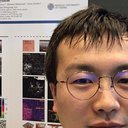Ethyl Acetate Extract of Asclepias curassavica Induced Apoptosis in Human Cancer Cells via Activating p38 and JNK MAPK Signaling Pathways.
Keywords
Abstract
Background. Asclepias curassavica L. (Asclepiadaceae), as a traditional medicinal plant, is used as treatment for tumors in traditional Chinese and Indian medical practice. However, its underlying molecular mechanisms remain largely unresolved. The current study investigated its antitumor activity and the underlying molecular mechanisms. Method. Cell viability was detected by a real-time cell analysis system and MTT assay. Antitumor effect of ethyl acetate extract of Asclepias curassavica (EAAC) on NIC-H1975 tumors in vivo was assessed in BALB/c-nu/nu mouse. Apoptosis was measured using Hoechst33342 staining and Annexin V/PI-staining. Apoptosis-related proteins and MAPK signaling pathways were analyzed based on Western blot assay. Results. EAAC exhibited the highest cytotoxic activity in vitro than other polar parts. Meanwhile, EAAC could inhibit sensitive cell line NIC-H1975 proliferation in a concentration-dependent and time-dependent manner. Furthermore, EAAC had a significant inhibitory effect on NIC-H1975 tumor growth in BALB/c-nu/nu mouse. NIC-H1975 cells showed obvious apoptosis characteristics after EAAC treatment. Fas, caspase family members caspase 3, caspase 9, and caspase 8 showed dose-dependent induction by EAAC treatment, with increasing PARP cleavage. Additionally, EAAC significantly downregulated antiapoptotic proteins Bcl-2, XIAP, survivin, and Mcl-1 and upregulated proapoptosis proteins Bak, Bax, as well as activation of p38 and JNK MAPK signaling pathways. Moreover, inhibiting p38 and JNK MAPK by pharmacological inhibitors abrogated EAAC-induced apoptosis. Conclusion. Our data indicated that EAAC exerted potent antitumor effect both in vitro and in vivo by triggering the apoptotic pathway.




